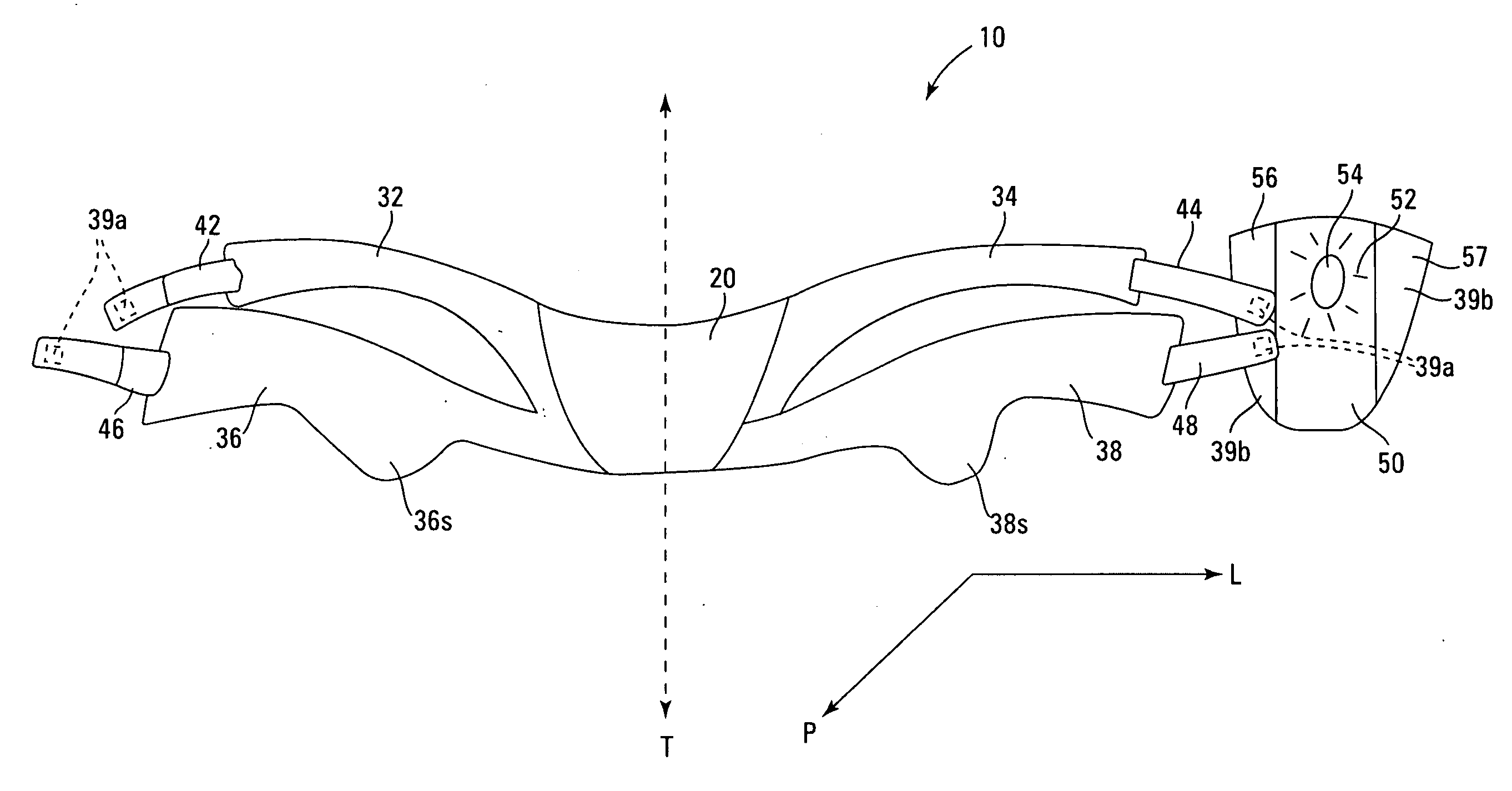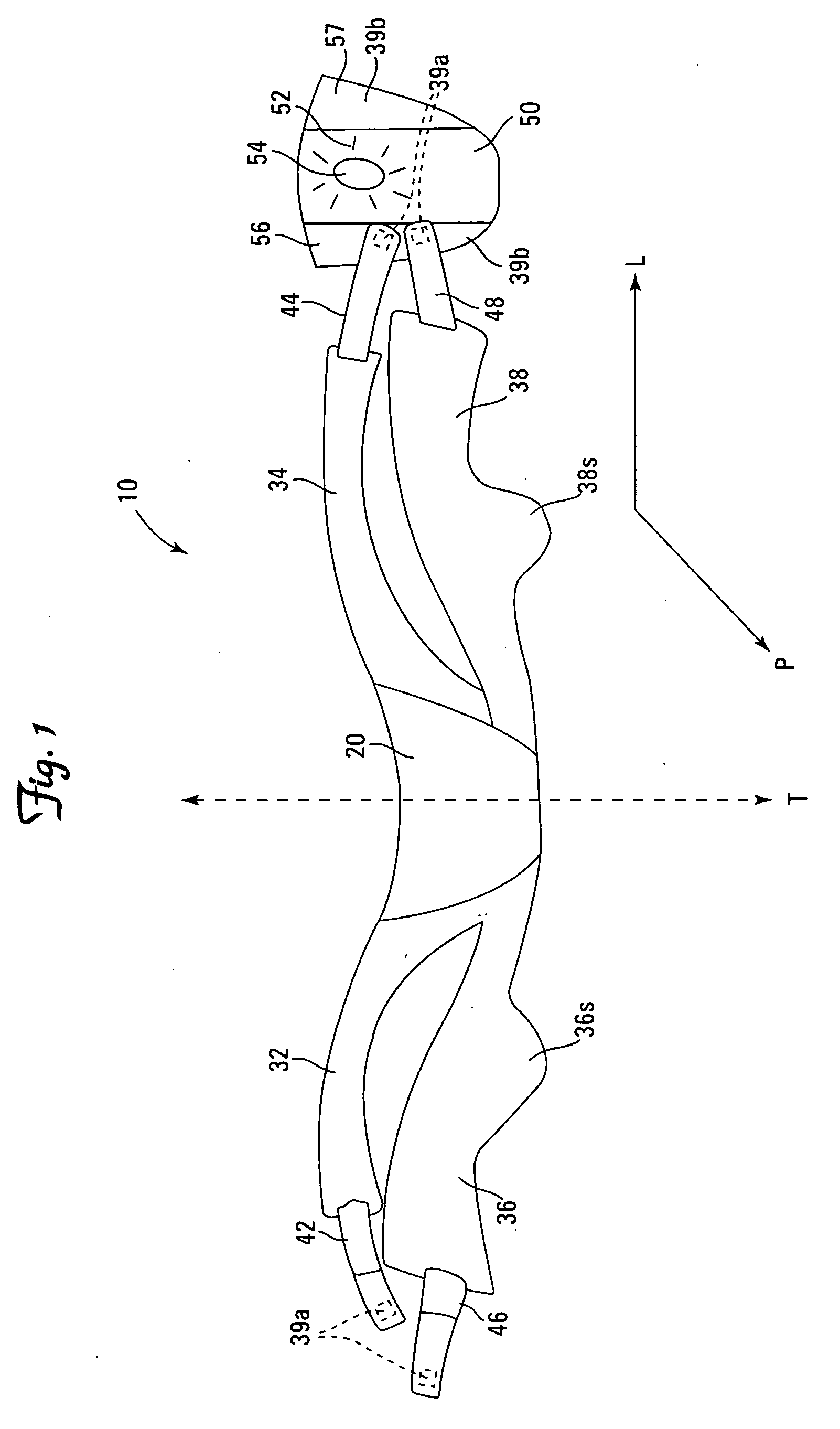Headguard with temple protecting scallop that does not cover the ears
a headguard and scallop technology, applied in the direction of protective garments, helmet covers, helmet covers, etc., can solve the problems of uncomfortableness of american football helmets with tight fittings
- Summary
- Abstract
- Description
- Claims
- Application Information
AI Technical Summary
Problems solved by technology
Method used
Image
Examples
first embodiment
[0070]The first embodiment of the present invention, depicted in FIGS. 1 and 2, is a headguard 10 comprising a front pad 20, a rear pad 50, and left and right, upper and lower independently adjustable bands 32, 34, 36 and 38 (collectively bands 30) and left and right scallops 36s and 38s on the left and right lower bands 36 and 38 respectively. As shown in FIG. 1, the front pad 20 can be oriented with a lateral line L and a longitudinal line T that is perpendicular to line L. The length of the front pad 20 is the maximum dimension of the front pad 20 measured parallel to the lateral line L. The width of the front pad 20 is the maximum dimension measured parallel to the longitudinal centerline T in the longitudinal direction. The thickness of the headguard 10 is the maximum dimension measured parallel to the line P.
[0071]The bands 30 extend laterally from the front pad 20 and wrap around the head 100. When measuring from the longitudinally extending center line T which bisects the fr...
second embodiment
[0079]A second embodiment of the present invention is depicted in FIGS. 3 and 4. Many aspects of the second embodiment can resemble those of the first. The second embodiment of the headguard 200 consists of a single set of left and right extending bands 236 and 238 with left and right scallops 36s and 38s extend longitudinally downward from the bands 236 and 238 respectively.
[0080]The headguard 200 can function with or without the adjustment straps 246 and 248 as employed in the first embodiment. Without the adjustment straps 246 and 248, the bands 230 simply attach directly to the rear pad 250, such as via hook and loop tape 239 with the hook portion 239a on the distal end of the bands 236 and 238 cooperating with loop portions 239b covering the attachment areas 256 and 257 on the rear pad 250. However, stretchability of the headguard 10 could be somewhat more limited without the adjustment straps 246 and 248. The position of the scallops 36s and 38s protectively covering the templ...
PUM
 Login to View More
Login to View More Abstract
Description
Claims
Application Information
 Login to View More
Login to View More - R&D
- Intellectual Property
- Life Sciences
- Materials
- Tech Scout
- Unparalleled Data Quality
- Higher Quality Content
- 60% Fewer Hallucinations
Browse by: Latest US Patents, China's latest patents, Technical Efficacy Thesaurus, Application Domain, Technology Topic, Popular Technical Reports.
© 2025 PatSnap. All rights reserved.Legal|Privacy policy|Modern Slavery Act Transparency Statement|Sitemap|About US| Contact US: help@patsnap.com



